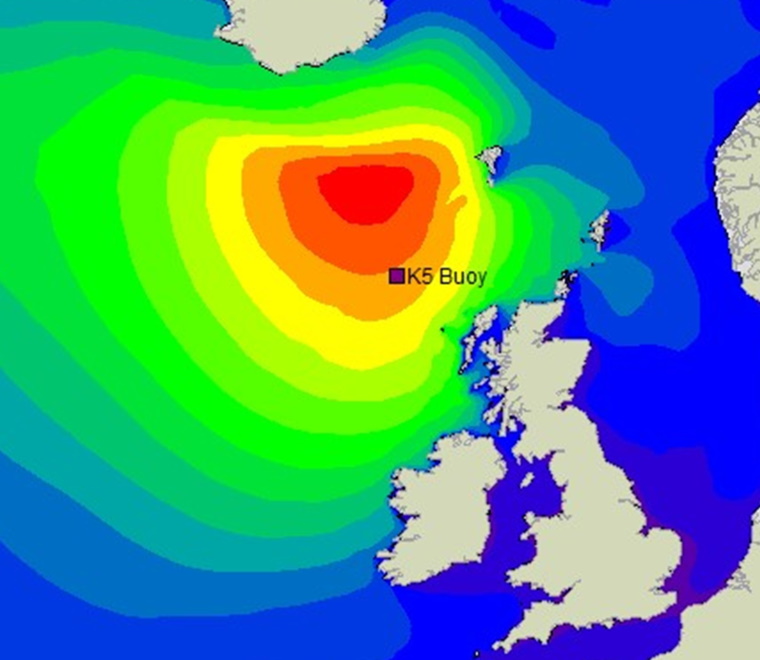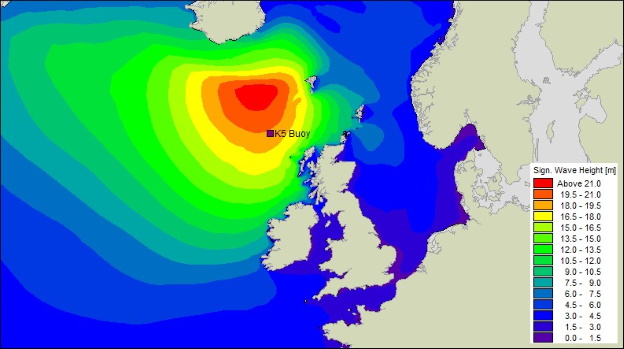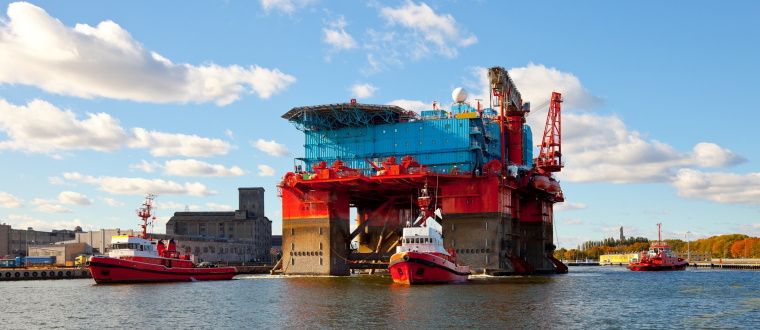

World’s largest waves captured by ABPmer’s SEASTATES
After the World Meteorological Organization declared a new world record significant wave height, ABPmer's SEASTATES captured some interesting insights into the event.
On Tuesday, the World Meteorological Organization issued a press release declaring a new world record significant wave height measured by a buoy. The significant wave height was measured as 19 meters (62.3 feet).
The event occurred at 0600 UTC on 4 February 2013, and the wave buoy which measured the event is called K5, situated in the North Atlantic between the UK and Iceland, the area responsible for most of the largest waves on the planet.
Of note is that this recording of wave height is the ‘significant wave height’. This is a measure of the average height of the highest one third of waves over a defined period of time, in this case over 17 and a half minutes. What makes this recording all the more interesting is that, given that the recorded significant wave height is only an average of the largest waves, there would have been some waves during the measurement period which were very much larger. Indeed, a commonly used rule of thumb applied in oceanography is that the maximum wave height (the very largest wave height over the measurement period) is, on average, around twice the significant wave height.
What all this means is that, over the period of time during which this record-breaking significant wave height was recorded, there would likely have been at least one wave with a height of 38 metres (124.6 feet). These individual waves were unfortunately not measured by the wave buoy, but it is likely the largest waves during this record-breaking event would have dwarfed other notable large wave events, including the famous 84 foot Draupner wave or New Year's rogue wave measured in the North Sea.


ABPmer's SEASTATES shows the 19-metre wave height captured by the K5 buoy, as well as larger waves further north
We also wondered what the chances are that the K5 buoy was actually situated in the ‘eye of the storm’. We took a look back in our SEASTATES hindcast database to see what was happening at the time of the recording. The picture above shows the predictions of SEASTATES for 0600 UTC on 4 February 2013.
ABPmer’s SEASTATES accurately predicts a significant wave height of 19.1 metres at the position of the K5 buoy. But we can also see that larger waves are predicted further north. In fact, the largest maximum individual wave height predicted by SEASTATES during this event, in the ‘eye of the storm’, is a whopping 40 metres, or 131 feet. That’s an individual wave the size of a 13 storey building!
To learn more about SEASTATES and ABPmer's metocean services, visit our SEASTATES microsite, or call +44 (0)23 8071 1879.



